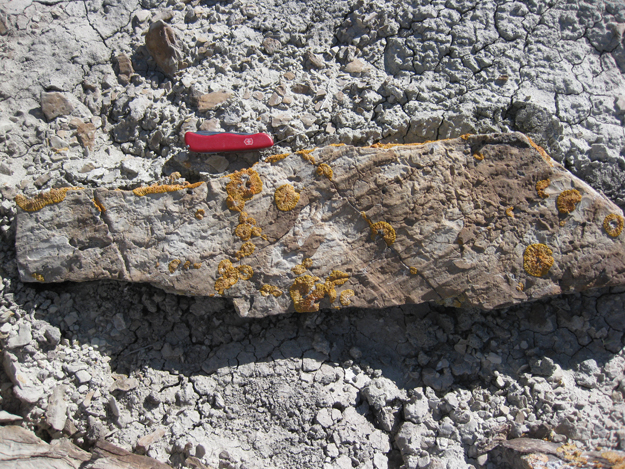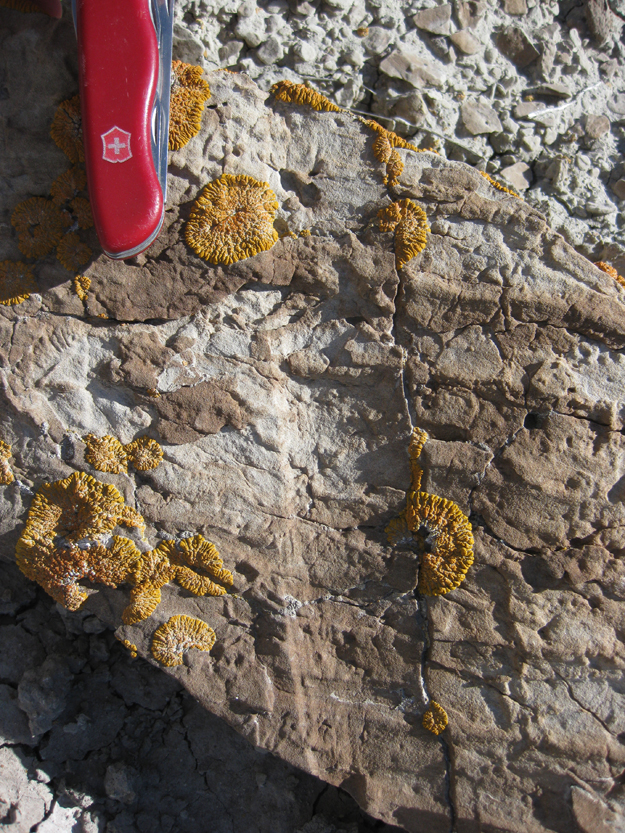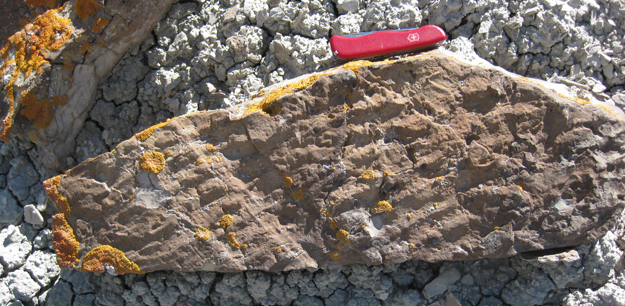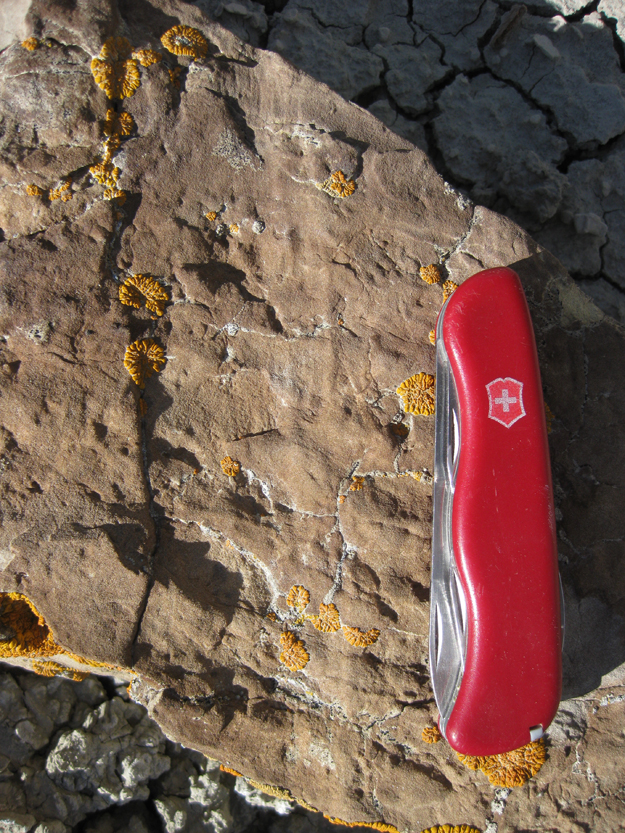Okay, so I was out photographing ripples and admiring lichens, and then I saw this:

That’s a rippled slab of sandstone, but with a linear groove that obliquely cross-cuts the ripple marks. Smaller, parallel grooves lie within the main groove.
Here’s another look at that same one, spun around and zoomed-in:

It looks as if something was dragged through the wet sand at this location, prior to its lithification. Given the proximity to dinosaur fossils that Virginia Museum of Natural History paleontologist Butch Dooley was excavating, and given my earlier discovery of large concave structures that may be sauropod footprints, the thought that sprung to my mind was whether this could be a case of a dinosaur tail being dragged through the sediment. I know that modern interpretations of dinosaur posture have their tails held high rather than dragging in the dirt, but that’s the image that came to my mind regardless.
Here is a second example. Same thing:

Same one, spun around and zoomed-in:

What do you think about this: What kind of trace fossil is this (assuming it’s a trace fossil)? I’d especially like to hear from anyone with paleontological expertise.

Interesting photo! I’m not convinced that it’s a drag mark: if that were the case, I would expect the ripples in the bottom of the “drag” to be smeared in one direction, rather than simply vertically compressed, as they seem to be. I wonder if the “tool mark” is the mold of a stick of driftwood that became stranded when the water level dropped. The longitudinal ridges visible in the groove could be bark or wood grain impressions rather than drag marks. The wood has subsequently weathered away, leaving the mold. How ’bout that?
–Howard
I like it! Good logic.
We do have examples of dinosaur tail drag marks, they tend to be rare, fairly narrow (probably just the tip of the tail dragging), sinusoidal and directly associated with footprints. Here is an example.
Given what you have shown here, it seems a possible interpretation, but difficult to establish with any certainty. There are also crocodilians and lepidosaurs in the Morrison that are possible candidate “tail-draggers” though it might be rather big for the latter.
Any reason to rule out a non-biogenic origin like a tool mark or drag mark?
Nope – could very easily be a tool mark! I was just in Dino discovery mode, you know — going for 2 out of 2!
If a piece of wood tended to align itself with the flow direction that would support Howard’s interpretation.